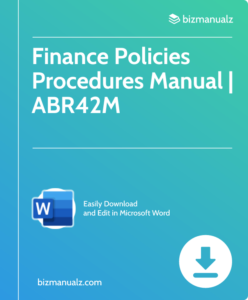How to Write Off a Bad Debt

Do you have a bad debt you’re not sure how to handle? Worry no more! Here, we will offer you straightforward steps and a formal tone to help you out. How to write off a bad debt.
Understanding Bad Debts
Bad debts in business are common. When customers don’t repay debt, it must be written off as a loss. However, writing off bad debts isn’t straightforward.
First, the situation must be accurately assessed to determine if the debt is truly uncollectible. Factors such as customer financial stability and late payments should be considered. Once it’s established that the debt is bad, several methods can be used.
One strategy is attempting to collect on the debt through collection agencies or legal action. This should be considered when some of the amount can be recovered. Alternatively, a repayment plan that suits both parties can be negotiated with the debtor.
Another option is selling the bad debt to a third-party collection agency. This may result in lower recovery but provides immediate relief from pursuing the debtor directly.
Keeping detailed records throughout is important for tax purposes and future reference. Documentation of all efforts made to recoup payment and agreements with the debtor should be included.
Steps to Write Off a Bad Debt
Writing off a bad debt can be tricky, but with the right steps, it’s doable. Here’s an overview to help:
- Assess the situation – Check the debtor’s financial status and payment history.
- Review your options – Think about available choices like negotiating, getting a collection agency, or legal action.
- Document everything – Keep records of communication and actions taken.
- Adjust your books – Change accounting records to reflect the write-off.
- Seek professional advice – If needed, get help from an accountant or financial advisor.
Flexibility is key – adapt these steps to your needs.
Don’t be afraid to take action when it comes to bad debt. With these steps, you can reduce the stress associated with this and protect your business finances.
- First, you should understand what a bad debt is. It’s an unpaid amount owed to you by a customer or client. If it’s not handled, it can affect your finances and business performance.
- You must take certain steps to address the issue. Step one is to assess the situation and determine the account as uncollectible. This needs a review of your records and analysis of the debtor’s ability to pay. Plus, any legal issues should be taken into account.
- The next step is to write off the bad debt from your books. This requires adjusting your financial statements to show the loss. Documentation is essential during this process.
- Now, you may be hesitant to get help from an accountant or an attorney. But they can provide insight and ensure the process is done correctly.
Act quickly when dealing with bad debt, take charge of your finances, and face it head-on!
I’ll share a story to show how these steps work. At XYZ Company, we had a customer who delayed payments for months. We analyzed their financial statements and credit history, and realized they couldn’t pay. We looked into our options, but decided legal action was too costly and time-consuming. So, we wrote off the debt.
We documented everything, and that came in handy when asked about our decision. By following the procedure and getting advice, we wrote off the debt while avoiding risks. We learned a lot about managing credit.
Implications and Considerations
Analyzing the financial impact, abiding by the law and looking at the potential consequences are all implications and considerations when writing off a bad debt. It’s vital to understand these before making any decisions. Furthermore, it’s essential to consider the age of the debt, attempts at collection and the likelihood of recovery – all tailored to the debt itself.
For an informed decision, a financial professional should be consulted to provide expert guidance. Don’t put off action, as this could result in lost opportunities for resolution or recovery. Handle bad debts as soon as possible to limit their effect on your finances.
Write Off a Bad Debt
When it comes to writing off a bad debt, be sure to keep accurate records. Document all communication for potential legal action. Timely and persistent attempts to collect should be made. Phone calls, emails, and letters will help. Maintain a professional yet assertive approach.
Offer a settlement or payment plan. Show flexibility and willingness to work. Engage a collections agency if necessary. They have specialized knowledge to increase debt recovery chances.
Additional Resources (optional)
To get more info on writing off a bad debt, have a look at this table. It has sources, brief descriptions, and key takeaways.
| Source | Description | Key Takeaway |
|---|---|---|
| IRS website | Guidelines on deducting bad debts for tax purposes. | Learn IRS guidelines to properly deduct bad debts. |
| Small Business Administration | Resources on managing cash flow and minimizing bad debts. | Use SBA strategies to reduce bad debts. |
| Accounting software platforms | Tools and tutorials for tracking and managing bad debts. | Use accounting software to manage debt better. |
| Industry associations | Industry-specific insights on preventing and handling bad debts. | Join relevant associations for tailored resources. |
Also, keep accurate records of attempts to collect the debt. This can include correspondence, invoices, or evidence of efforts to pursue payment. See if the debt should be written off or pursued further through legal means or debt collectors.
To prevent bad debts in the future, do credit checks on potential clients, set payment terms and policies early, and follow-up promptly on overdue payments. These suggestions help you stay proactive in preventing bad debts, and use systematic approaches when they occur.
FAQ 1: How can I write off a bad debt?
Answer: To write off a bad debt, you need to follow these steps:
- Identify the debt as uncollectible and determine it as a bad debt.
- Record the bad debt expense in your financial records.
- Write off the debt amount as a loss in your accounts receivable.
- Adjust your tax returns to reflect the bad debt.
FAQ 2: What documents do I need to write off a bad debt?
Answer: To write off a bad debt, you typically need the original invoice or contract, records of attempts to collect the debt, and any communication or correspondence related to the debt. These documents will help support the decision to classify the debt as uncollectible.
FAQ 3: Can I write off a bad debt as a tax deduction?
Answer: Yes, you can generally write off a bad debt as a tax deduction. However, specific rules and requirements may vary depending on your jurisdiction. Consult with a tax professional to understand the tax implications and ensure compliance with the applicable laws.
FAQ 4: How does writing off a bad debt affect my financial statements?
Answer: Writing off a bad debt affects your financial statements by reducing your accounts receivable and increasing your bad debt expense. It reflects the loss in potential revenue and the impact on your company’s profitability. It is important to accurately document and account for bad debts to maintain the integrity of your financial statements.
FAQ 5: Can I recover a bad debt after writing it off?
Answer: Yes, you can still attempt to recover a bad debt after writing it off. However, once a debt is written off, it is considered uncollectible, and the chances of recovery diminish. If you do successfully recover a written-off debt, you will need to reverse the bad debt expense and reinstate the amount in your accounts receivable.
FAQ 6: Are there any alternatives to writing off a bad debt?
Answer: Yes, there are alternatives to writing off a bad debt. You can explore options such as debt restructuring, settlement negotiations, or engaging a collection agency to recover the debt. It is important to carefully evaluate the cost-benefit and potential impact on your business before deciding which alternative to pursue.

















Leave a Reply